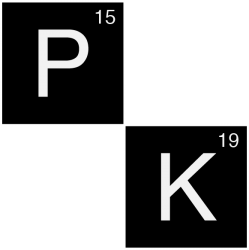“Rate of plasma drug removal by an organ of elimination, divided by the rate at which it is presented to this organ”
Description
The extraction ratio of an organ of elimination (e.g. the liver or the kidneys) can be viewed as the measure of the organ’s relative efficiency in eliminating the drug from the systemic circulation over a single pass through the organ. The extraction ratio may range from 0 to 1. An extraction ration close to 0 indicates that most of the drug escapes elimination during a single pass through the organ. An extraction ratio close to 1 indicates that most of the drug is eliminated during a single pass through the organ.
The organ clearance (mainly the hepatic or the renal clearance) may be influenced by the organ blood flow, protein binding and the intrinsic ability of the organ to eliminate the drug. The extent of this influence depends on the extraction ratio of the drug:
1) Variation of organ blood flow:
a) for drugs with low extraction ratio (<0.3): the venous drug concentration is virtually identical to the arterial concentration and organ clearance is poorly influenced by blood flow variations.
b) for drugs with high extraction ratio (>0.7): changes in blood flow produce corresponding changes in clearance, e.g. an increase in organ blood flow will increase the amount of drug presented to and eliminated by the organ.
2) Variation of plasma protein binding:
a) for drugs with low extraction ratio: only unbound drug penetrates membranes and is available for elimination. An increase of the unbound fraction will thus proportionally increase the clearance. Therefore, the unbound drug concentration remains constant and no adaptation of the dosage regimen is required.
b) for drugs with high extraction ratio: the organ is capable of removing all the drug presented to it, independently of plasma binding. Therefore, even if the fraction of unbound drug increases, the clearance remains constant and the unbound concentration then increases and may lead to toxicity.
3) Variation of the organ’s intrinsic ability to eliminate the drug:
a) for drugs with low extraction ratio: a slight change in this ability will affect organ clearance.
b) for drugs with high extraction ratio: this ability is so elevated that this variation poorly influence clearance, which is mainly limited by organ blood flow.
Clinical implications
When a drug is mainly eliminated by the liver or by the kidney, it is essential to know the extraction ratio of the drug through this organ to be able to evaluate which conditions affecting the organ will change the clearance and to further adapt the dosage regimen.
Related terms
Intrinsic clearance (CLint): theoretical unrestricted maximum clearance of unbound drug by an eliminating organ, in absence of blood flow or plasma protein binding limitations. This term relates to the functional reserve of the organ. The CLint may be determined in vitro using enzyme kinetics.
Chart Pharmacokinetics
Assessment
The extraction ratio can be assessed by using the following formula which relates the rate of elimination of the drug to its rate of presentation to the organ of elimination. This requires sampling of arterial and venous blood at organ outflow.
$$E = {\color{pink}{C_A}-\color{RoyalBlue}{C_V} \over \color{pink}{C_A}}$$
Supposing that there is an instantaneous and complete mixing of the drug with the organ tissues, the following equation may be used, integrating CLint and fub obtained in vitro and the in vivo blood flow measured through the organ:
$$E = {\color{pink}{fub} *\color{RoyalBlue}{CLint} \over Q +(\color{pink}{fub} * \color{RoyalBlue}{CLint})}$$
E = extraction ratio
CA = arterial drug concentration
CV = venous drug concentration
fub = fraction of unbound drug
Q = blood flow to the organ
CLint = intrinsic clearance

